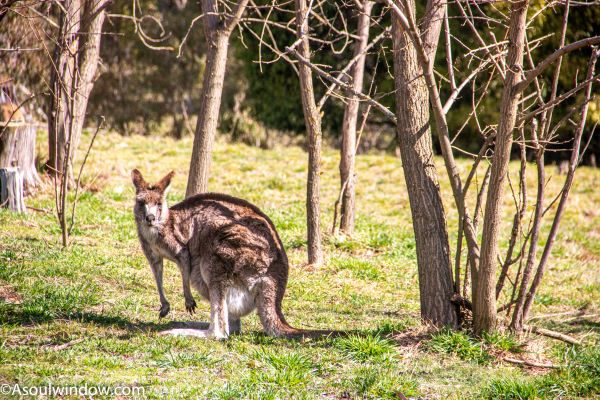Last Updated on July 6, 2023 by asoulwindow
Table of Contents
What animals are in the Tidbinbilla Nature Reserve?
What animals are in the Tidbinbilla Nature Reserve? During my visit to the Tidbinbilla Nature Reserve, within a few hours, I had spotted many wild animals such as Southern Brush-tailed Rock-Wallabies, kangaroos, platypus, koala, some unusual lizards and many more. Gazetted as a nature reserve and national park in 1971, Tidbinbilla nature reserve is now a major wildlife conservation area, located right next to the bustling capital city of Canberra.
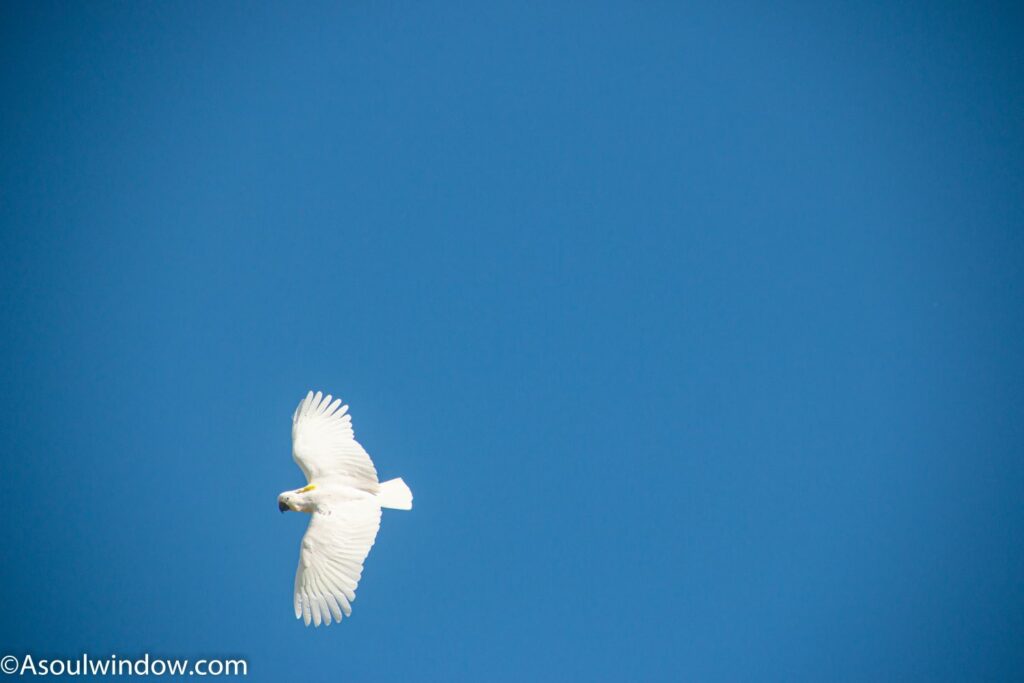
You can join a safari tour for a guided walk around Tidbinbilla. Here is a list of wild animals, amphibians, insects and reptiles you can see during the Tidbinbilla nature reserve walks:
- Koalas
- Platypus
- Echidnas
- Wallabies
- Wallaroos
- Kangaroos
- Bandicoots
- Eastern Bettong
- Swamp wallabies
- Northern Corroboree Frogs
- Southern Brush-tailed Rock-Wallabies
- Long nosed Potoroos (Potorous tridactylus)
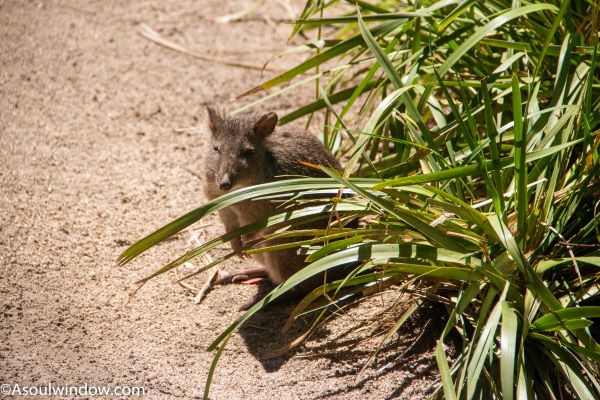
- Cunningham’s Skink (Egernia cunninghami)
- Eastern Grey Kangaroo (Macropus giganteus)
- Grassland Earless Dragon (Tympanocryptis lineata)
- Yellow-winged Grasshoppers or locusts (Gastrimargus musicus)
- Tiger quoll (Dasyurus maculatus), also known as the spotted-tail quoll, the spotted quoll, the spotted-tail dasyure
Birdwatching in Tidbinbilla Nature Reserve
Birds of Tidbinbilla can be observed over a walk. Thanks to the vast wetlands of Tidbinbilla, it is a paradise for the avid birdwatchers because such habitats attract several water birds as well as migratory birds. It is quite easy to be able to spot various species of birds such as lyrebirds, ducks, herons and grebes. It is a good idea to go on a birdwatching tour with an expert guide.
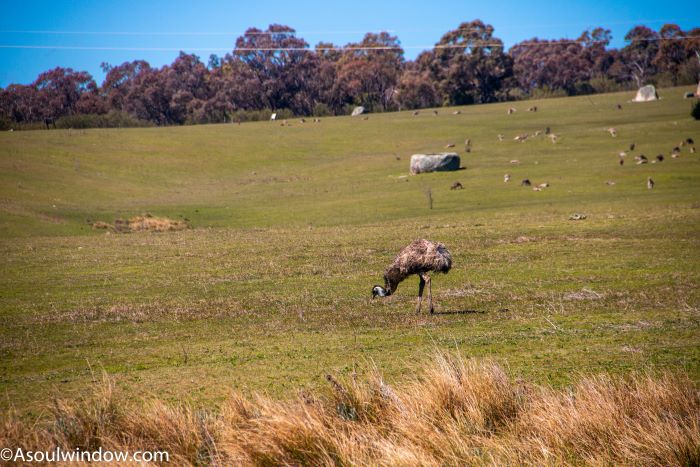
Bird species found in Tidbinbilla Nature Reserve
Below are some of the bird species found in Tidbinbilla Nature Reserve:
- Emus
- Lyrebirds
- Freckled ducks
- Rufous Whistler
- Brolga (Grus rubicunda)
- Blue Australian Moorhen
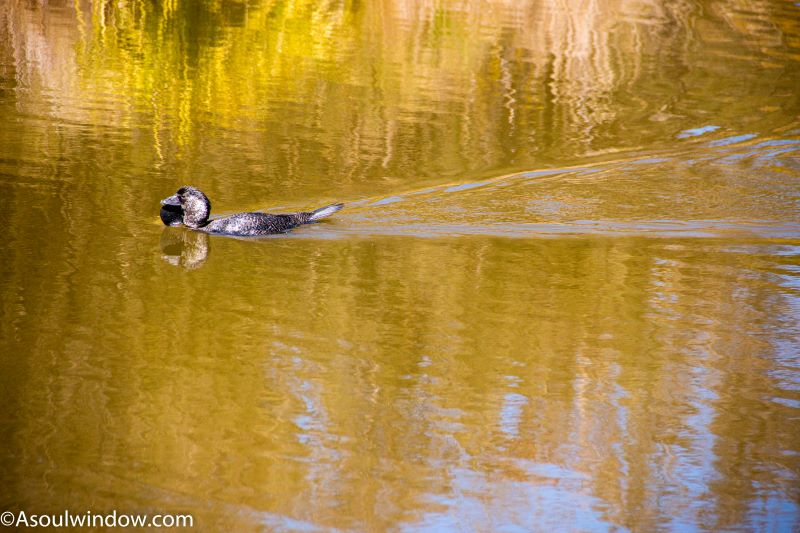
- Musk Duck (Biziura lobata)
- The black swan (Cygnus atratus)
- Grey Fantail (Rhipidura albiscapa)
- Brown Goshawk (Accipiter fasciatus)
- Striated Thornbills (Acanthiza lineata)
- Common Bronzewing (Phaps chalcoptera)
- Rufous Whistler (Pachycephala rufiventris)

- Australian Pelican (Pelecanus conspicillatus)
- Sulphur-crested Cockatoo (Cacatua galerita)
- Laughing Kookaburra (Dacelo novaeguineae)
- The mallard or wild duck (Anas platyrhynchos)
- Australasian darter (Anhinga novaehollandiae)
- Gang-gang cockatoo (Callocephalon fimbriatum)

- Australasian Grebe (Tachybaptus novaehollandiae)
- Yellow-faced Honeyeaters (Lichenostomus chrysops)
- The Australian hobby (Falco longipennis) aka little falcon
- Yellow-tailed Black Cockatoos (Calyptorhynchus funereus)
- Australian wood duck, maned duck or maned goose (Chenonetta jubata)
- Galah (Eolophus roseicapilla) aka rose-breasted cockatoo or pink and grey cockatoo.
Soul Window Fun Facts
Did you know that Tidbinbilla Nature Reserve is the only place in the ACT which is also home to the Brush-tailed Rock-Wallabies.
What is Tidbinbilla the habitat of?
Thanks to the mixed habitat of Tidbinbilla Nature Reserve, which is spread across 54.5 square kilometres of protected area, it supports a wide range of Australian animals, reptiles, birds, plants, shrubs and trees.
Located on the fringe of the Namadgi National Park, Tidbinbilla is a safe haven for indigenous Australian wildlife. The feral-predator free habitat of Tidbinbilla is ideal for wildlife conservation efforts.
Flora of Tidbinbilla Nature Reserve
The diverse sub-alpine habitats of Tidbinbilla Nature Reserve include:
- Wetlands
- Dry forests
- Grasslands
- Woodlands
- Wet forests
Wildlife Conservation in Tidbinbilla Nature Reserve
Thanks to theferal-predator free habitat of Tidbinbilla Nature Reserve, there is a higher chance of wildlife reintroduction success here. Threatened Species Conservation In Tidbinbilla, wildlife protection and management in Tidbinbilla Nature Reserve has mostly been successful, which is why it continues to be amongst the best nature reserves of Australia. The aim of Tidbinbilla Nature Reserve is to protect endangered and threatened species as well as to ensure survivability of wild animals and birds outside of fenced environments.
My Experience of spotting Wildlife in Tidbinbilla Nature Reserve near Canberra
It was a crisp October morning in Tidbinbilla Nature Reserve near Canberra in Australia when I enjoyed the walk around the tracks within the forests. Though it is a fenced nature reserve, I never felt it during the walk. There is enough ample space for the wild animals to live life freely and roam around as they would have done in an unfenced and unprotected forest. It is not like animals caged in zoo like enclosures.
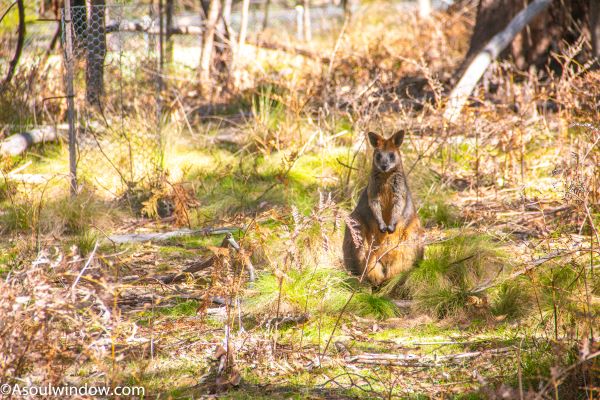
What animals are in the Tidbinbilla Nature Reserve? While walking I saw many Southern Brush-tailed Rock-Wallabies grazing on the grass nonchalantly while at the same time keeping an eye on us. The animals here are used to human presence and do not consider them as fatal threat.

“Look up on the tree. There is a Koala family perched atop the top branch!”, my tour guide said as I craned my neck. I failed to spot despite several attempts. The Koalas were sitting at the top most branch of the tall Eucalyptus tree. Later, I saw a female Koala and her baby in a fenced enclosure. The mother-baby duo was sleepy and slow-moving. They barely moved an inch away from the tree branch they were resting on. I also saw Long-Nosed Potoroos (Potorous tridactylus) in the same enclosure as that of Koala. The enclosure is also home to Swamp wallabies and brush-tailed rock wallabies.
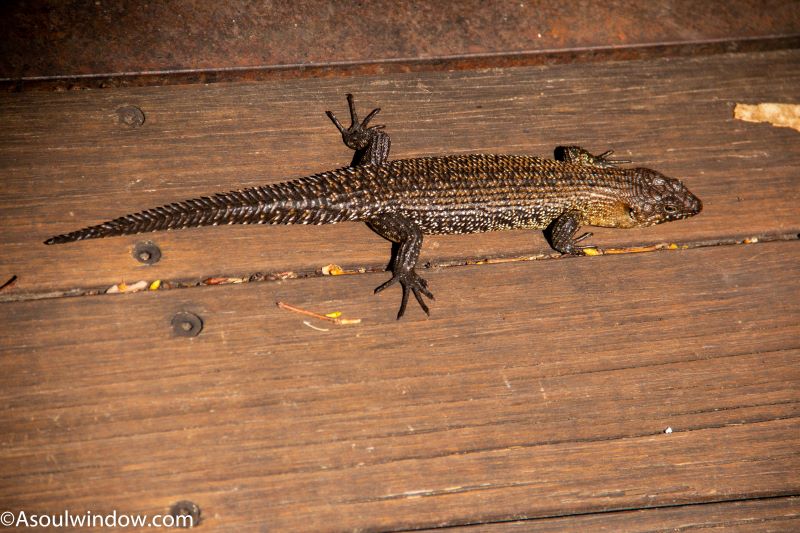
What reptiles are in the Tidbinbilla Nature Reserve? I also noticed many Cunningham’s Skinks (Egernia cunninghami) sunbathing near the vet hospital, unafraid of our presence. Not many people know that when threatened, this unique viviparous species of lizard inhales air to the point that makes its body swell up. The increase in their size coupled with their intimidating spiky keeled scales, makes it difficult for a predator to dislodge the lizard from its hiding place such spaces between rocks, under bark and hollow logs.

What birds are in the Tidbinbilla Nature Reserve? In the pond, I saw
- Emus
- Black swan
- Blue Australian Moorhen
- The musk duck (Biziura lobata)
- The pied currawong (Strepera graculina)
- Australasian Darter (Anhinga novaehollandiae)
- The Australian Pelican (Pelecanus conspicillatus)
- The female mallard or wild ducks (Anas platyrhynchos).
- Australian wood duck, maned duck or maned goose (Chenonetta jubata)
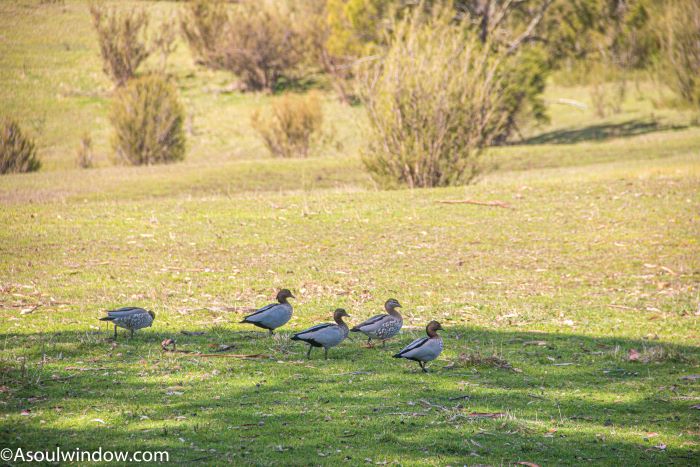
Tidbinbilla nature reserve walks
For a fee, you can book Tidbinbilla nature reserve walk with a local guide, who can not only show you around but can also educate you about the flora and fauna or the place. During my visit to Tidbinbilla Nature Reserve, the local guide showed me several places which I would have missed otherwise such as the huge man-made pond which is the home to platypus. He also showed me the in-house facilities such as the veterinary hospital where several wildlife veterinarians practice at Tidbinbilla Nature Reserve. I was also taught about the behaviour patterns of the pelican, koalas, wallabies and Kangaroos I spotted.
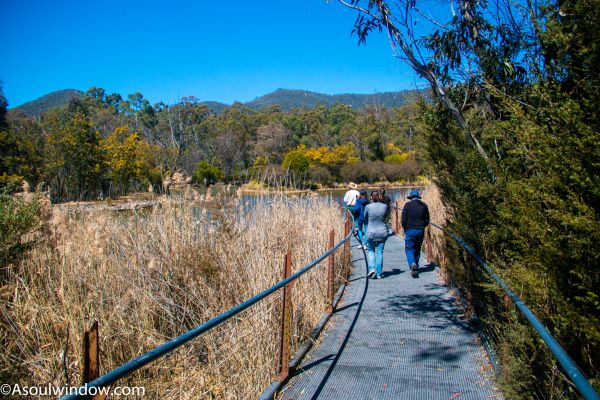
Is it safe to visit Tidbinbilla Nature Reserve?
Is it safe to go on Tidbinbilla nature reserve walks? Unlike the dense forests of India and savannah of Africa which are also home to ferocious animals, the jungle regions of Australia are pretty safe to visit when accompanied with a local tour guide. There is no immediate danger from the marsupials, mammals and birds who are found in Canberra and other parts of Australia. “Beware of the European wasps!”, I was told several times by my tour guide. Magpie attacks are also pretty common across South Australia.
Respect Wildlife of Tidbinbilla Nature Reserve
“Almost everyone in Canberra has a hit a Kangaroo by a car, including me!”, my young, female western tour guide told to a stunned me without any remorse when I inquired her about the decomposing bodies of huge kangaroos lying on the side of the roads as we wheeled towards Tidbinbilla Nature Reserve from Canberra.
“Sometimes, they even enter the Canberra city and are hit by cars because their movement is confusing, unpredictable and sudden.”, she added as I absorbed the information with shock! This is why always drive slowly when visiting the area in and around Tidbinbilla. There are many other animals here too.
Later as I was leaving Australia from Sydney, I was shocked to see shops in Sydney airport selling souvenirs like key chains, door mats and bottle openers made out of claws, balls and fur of Kangaroos.
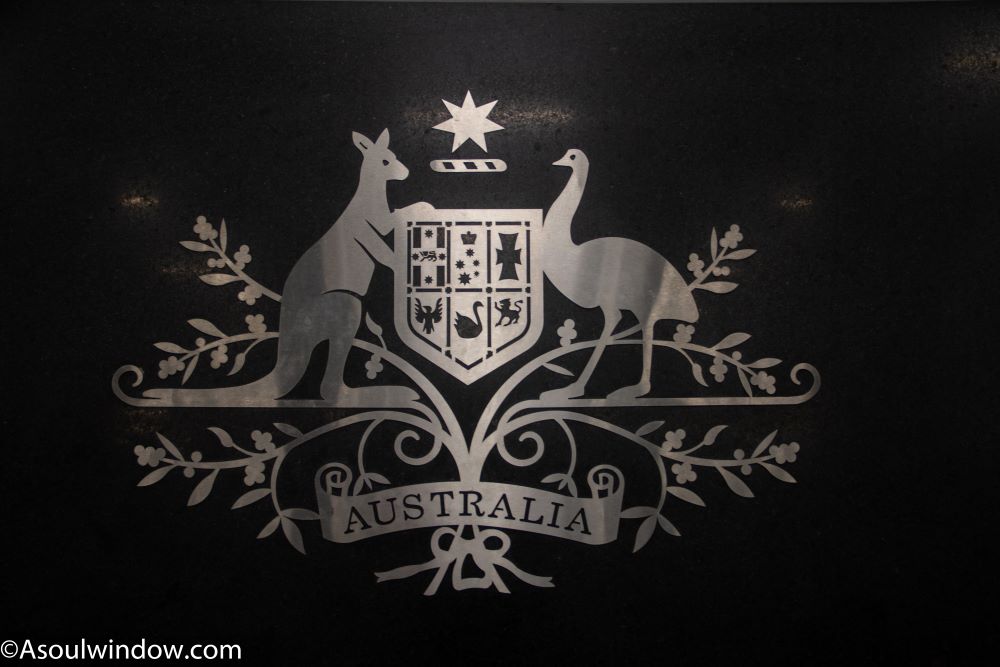
As the Australians joke, “We are the only humans who eat their national emblem!” As an animal lover, I would never buy those souvenirs made from dead animals, neither would I try their meat. I had turned vegetarian decades ago on ethical grounds anyways.
You should also be careful not to make a fire or cook within the reserve premises. My guide told me that during the devastating Bendora bushfire of 18th January 2003, 99% of the reserve park was burnt down, causing huge loss of the local wildlife. Koalas are very slow-moving animals and they were hit the hardest. Sadly, only one captive Koala survived the fire!
How to reach Tidbinbilla Nature Reserve?
A short drive from Canberra, the capital of Australia brought me to Tidbinbilla Nature Reserve.
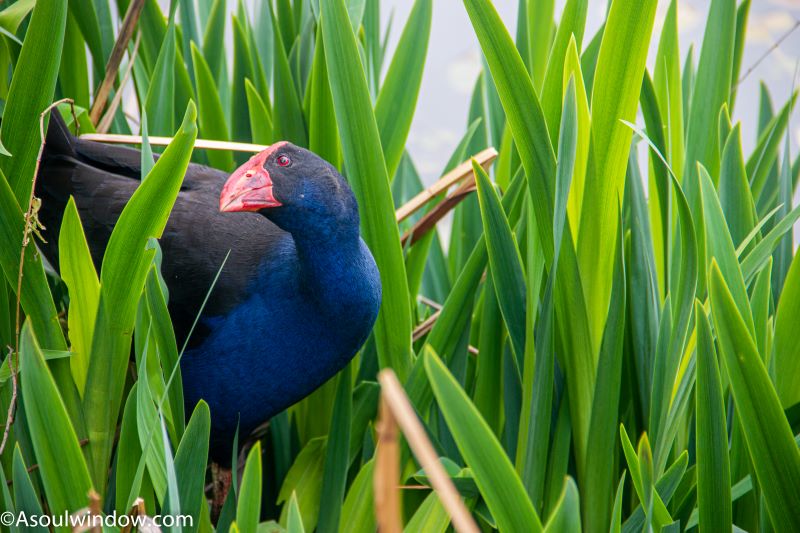
Conclusion
Here is a wrap-up! Tidbinbilla Nature Reserve, which has been an integral part of the Australian Capital Territory’s (ACT) nature conservation efforts since as long ago as the year 1936, has been a safe haven for the unique wild animals, birds and reptiles endemic to Australia.
Animals and birds of Tidbinbilla Nature Reserve are very unique and many of them are not found outside of Australia. Whether it is the marsupials, exotic birds, amphibians, reptiles or insects, a guided walking tour in Tidbinbilla Nature Reserve is rewarding. Do share this comprehensive blog on the fauna of Tidbinbilla with your friends and family.
Related Blogs
Is it safe to visit CBD Melbourne?
Harris Park is little India of Sydney
Top Things to do around Lake Burley Griffin in Canberra
Top Travel Blogger from India
